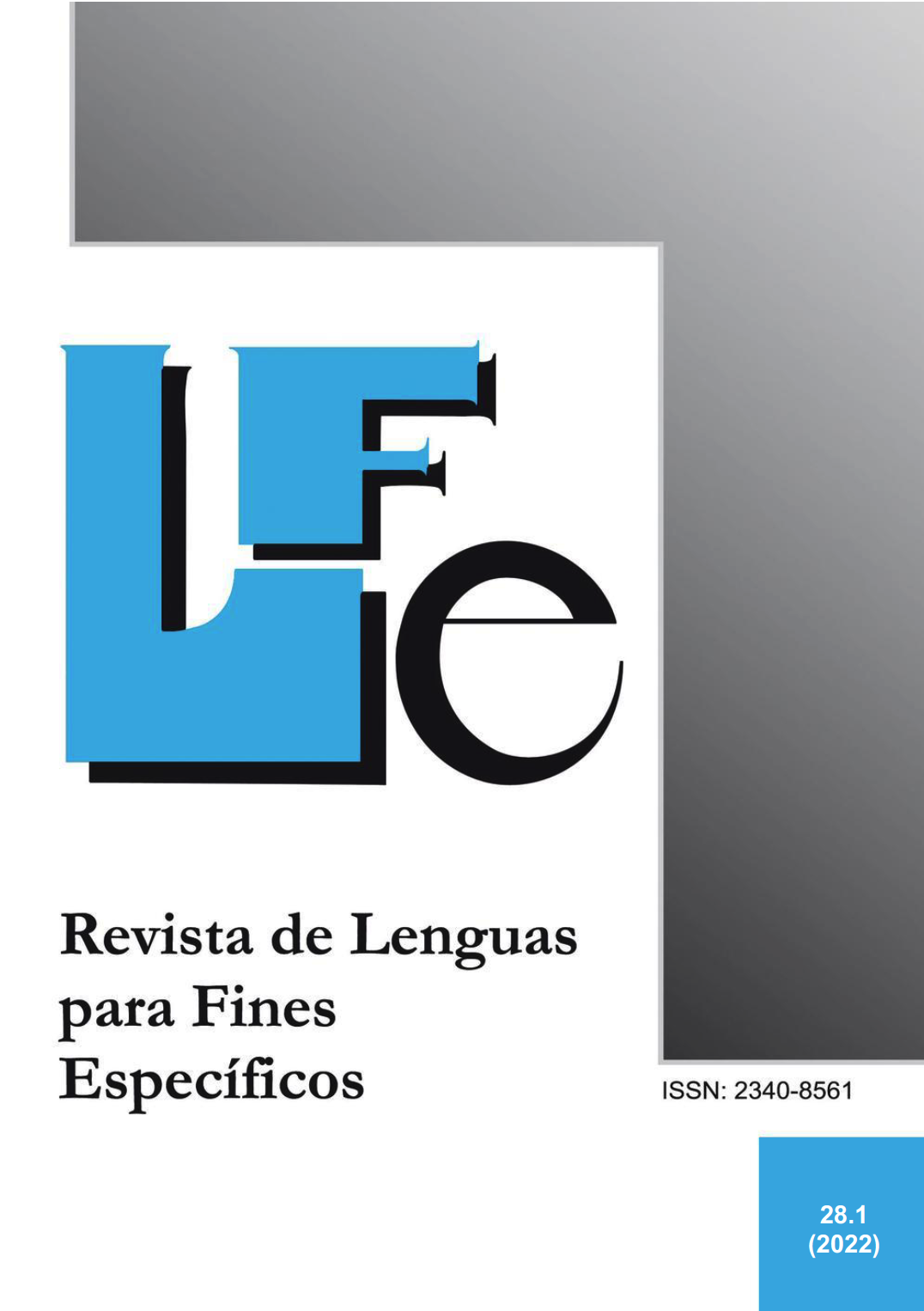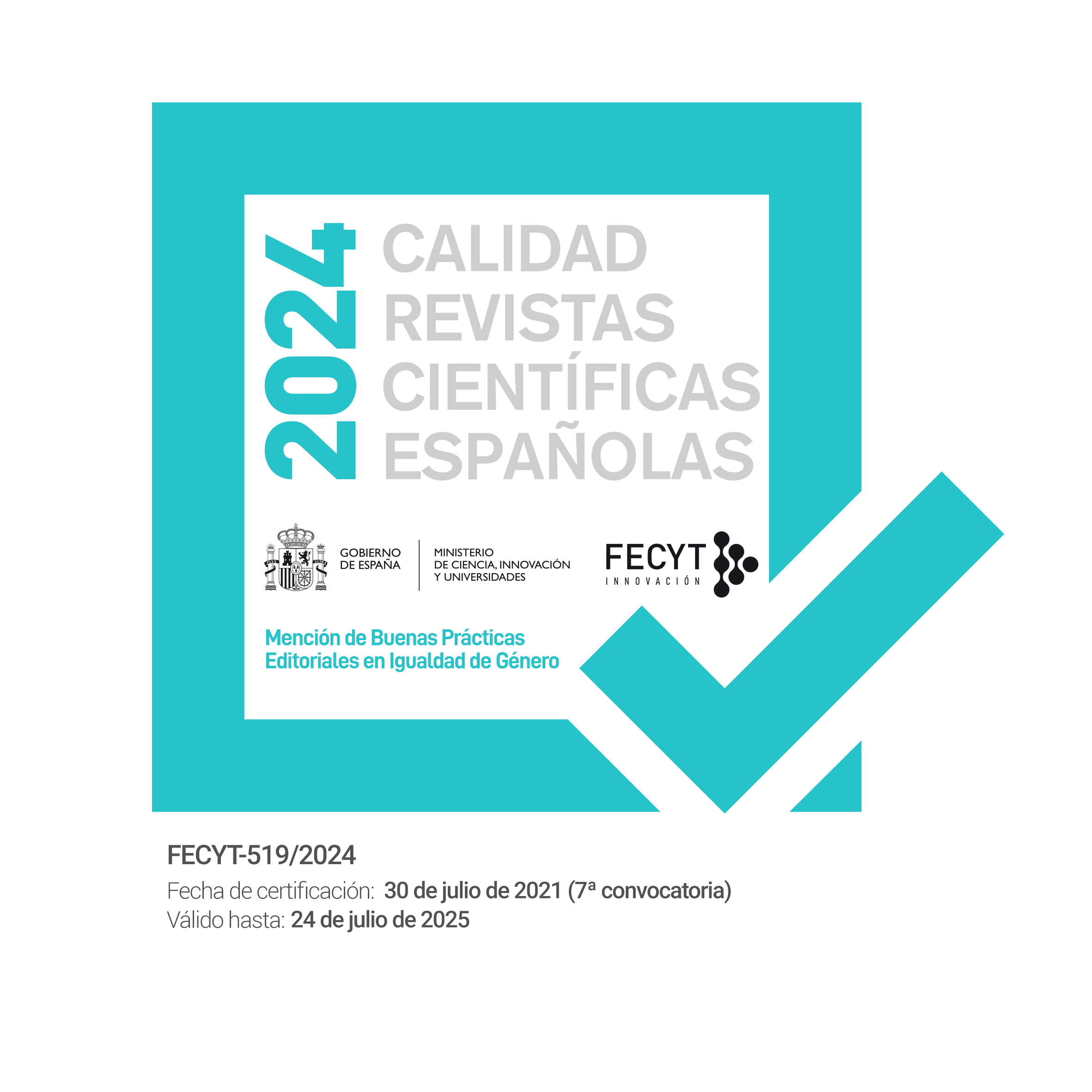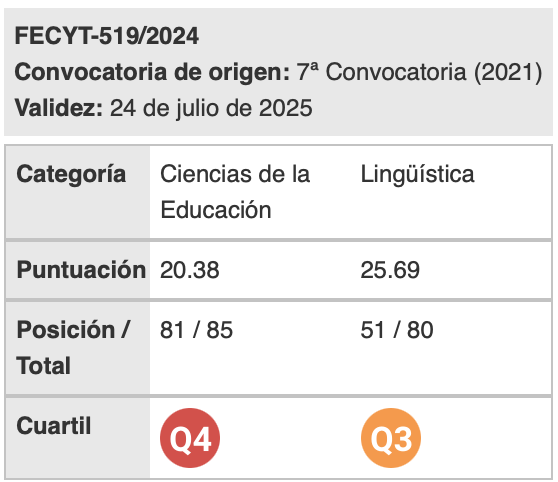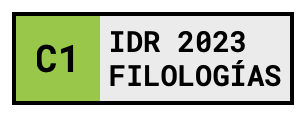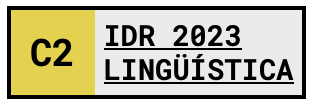A multicompetence perspective on the use of conjunctions in writing in English as a second language for academic purposes
Palabras clave:
conjunciones, escritura académica, multicompetencia, segunda lengua, influencia interlingüísticaResumen
Siguiendo el marco de multicompetencia (Cook y Li, 2016; Ortega, 2016), este artículo tiene como objetivo (a) analizar las diferencias en el uso de conjunciones entre los grupos de español L1 y español L1/L2 y los grupos de inglés L1 y de inglés L1/L2 y (b) determinar la posible aparición de influencia interlingüística entre los grupos. Los resultados revelaron que no se encontraron diferencias significativas entre los grupos de español L1 y español L1/L2, mientras que el grupo de inglés L1/L2 produjo más conjunciones que el grupo de inglés L1. No se encontró evidencia de influencia interlingüística. Parece que la competencia lingüística y la formación en escritura académica pueden ser más relevantes que ser un escritor académico nativo o no nativo.
Descargas
Citas
Alonso Alonso, R. (2019). A multicompetence perspective of hedging in second language academic writing. Onomazein 45, 58-78.
Carrell, P. L. (1982) Cohesion is not coherence. Tesol Quarterly, 16 (4), 479-488.
Centone, L. (2013) Conjunctions in ELF academic discourse: a corpus-based analysis. Lingue e Linguaggi, 10, 7-18.
Cook, V.J. (2002) Background to the L2 user. In V. J. Cook (ed.) Portraits of the L2 User (pp. 1-28) Clevedon: Multilingual Matters.
Cook, V. J. (2003) Effects of the second language on the first. Clevedon: Multilingual Matters.
Cook, V. J. (2012) Multicompetence and the native speaker. In C. A. Chapelle (ed.) The Encyclopedia of Applied Linguistics (pp. 3768-3774) Malden, MA: Blackwell.
Cook, V. & Li, W. (2016) The Encyclopedia of Multicompetence. Cambridge: Cambridge University Press.
Crossley, S. A., Salsbury, T., McNamara, D. S., & Jarvis, S. (2010) Predicting lexical proficiency in language learner texts using computational indices. Language Testing, 28, 561–580.
Crossley, S. A., Kristopher Kyle, L. K. Allen, L.G. & D.S. McNamara (2014) Linguistic microfeatures to predict L2 writing proficiency: A case study in Automated Writing Evaluation. The journal of writing assessment, 7 (1), 1-34.
Fraser, B. (1999). What are discourse markers? Journal of Pragmatics, 31, 931-95.
Granger, S., & Tyson, S. (1996). Connectors usage in the English essay writing of native and non-native EFL speakers of English. World Englishes, 15 (1), 17-27.
Grant, L., & Ginther, L. (2000). Using computer-tagged linguistic features to describe L2 writing differences. Journal of Second Language Writing, 9, 123–145.
Grosjean, F. (1998) Transfer and language mode. Bilingualism: Language and Cognition, 1(3), 175-176.
Gullberg, M. & Indefrey, P. (2003) Language Background Questionnaire.Developed in The Dynamics of Multilingual Processing. Nijmegen: Max Planck Institute for Psycholinguistics.
Halliday, M. A. K., & Hasan, R. (1976). Cohesion in English. London and New York: Routledge.
Hamed, M. (2014) Conjunctions in argumentative writing of Libyan tertiary students. English Language Teaching 7 (3),108-120.
Hayes, J.R. & Flower, L. (1980) Identifying the organisation of writing processes. In Gregg, E.R. & Steinberg, E.R. (Eds.) Cognitive processes in writing (pp. 3-30). Hillsdale, NY: Lawrence Erlbaum.
Heino, P. (2010). Adverbial Connectors in Advanced EFL Learners’ and Native Speakers’ Student Writing. Bachelor degree project, English, Stockholm University.
Huddleston, R. D., & Pullum, G. K. (2002). The Cambridge Grammar of the English Language. New York: Cambridge University Press.
Hyland, K. (1998) Hedging in Scientific Research Articles. Amsterdam: John Benjamins.
Hyland. K. (2002) Teaching and researching writing. London: Longman.
Hyland, K. (2005) Metadiscourse. Amsterdam: John Benjamins.
Hyland, K. (2017) English in the disciplines: arguments for specificity. ESP today. Journal of English for specific purposes at tertiary level 5 (1), 5-23.
Hyland, K.& Milton, J. (1997) Qualification and certainty in L1 and L2 students’ writing. Journal of Second Language Writing 6 (2), 183-205.
Jarvis, S. & Pavlenko, A. (2008) Crosslinguistic Influence in Language and Cognition. New York and London: Routledge.
Kang, J. (2005) Written narratives as an index of L2 competence in Korean EFL learners. Journal of Second Language Writing, 14, 259-279.
Kroll, B. (1991). Teaching writing in the ESL context. Teaching English as a Second or Foreign Language, 245-261.
Lee, K. (2013) Korean ESL learners’ use of connectors in English academic writing. English Language Teaching 25 (2), 81-103.
Martí Sánchez, M. (2008) Los marcadores discursivos en español LE: Conectores discursivos y operadores pragmáticos. Madrid: Arco Libros, S. L.
Martín Zorraquino, M. A. & Montolío, E. (1998). Marcadores del Discurso. Barcelona: Ariel.
Martinez, A. C. L. (2004). Discourse markers in the expository writing of Spanish university students. Iberica, 8, 63-80.
Martinez, A. C. L. (2015) Use of conjunctions in the compositions of secondary education students. Procedia –Social and behavioral sciences, 212, 42-46.
Matsumoto, Y. (2014). Beyond the logic of ‘all or nothing’ – Optimal use of L1 and L2 in the classroom. Paper read at the 43rd Annual Conference of The Kyushu Academic Society of English Language Education, Oita University, Oita, Japan.
McCarthy, M. (1991) Discourse Analysis for Language Teachers. Cambridge: Cambridge University Press.
Meyer, A. (2005). Gateways to academic writing: Effective sentences, paragraphs, and compositions. New York: Longman.
Michigan Corpus of Up-per-level Student Papers (under compilation at the University of Michigan English Language Institute) http://elicorpora.info.
Milton, J.C. P. & Tsang, E. S. C. (1993). A corpus-based study of logical connectors in EFL students’ writing: Directions for future research. Proceedings of a seminar on lexis organized by the Language Centre of the KHUST, Hong Kong, 215-246 http://repository.ust.hk/ir/Record/1783.1-1083.
Montolío, E. (2001). Conectores de la Lengua Escrita. Barcelona: Ariel.
Murray. N. & Geraldine, H. (2008). Writing up your university assignments and research projects: A practical handbook. Berkshire: The McGraw-Hill Companies.
Myhill, D. A. (2008). Towards a linguistic model of sentence development in writing. Language and Education 22(5), 271-288.
Narita, M., Sato, C. & Suguria, M. (2004) Connector usage in the English essay writing of Japanese EFL learners. Paper presented at the Fourth International Conference on Language Resources and Evaluation. http://www.lrec-conf.org/proceedings /lrec2004/pdf/48.pdf.
Nippold, M. A., Schwarz, I. E., & Undlin, R. A. (1992). Use and understanding of adverbial conjuncts: A developmental study of adolescents and young adults. Journal of Speech and Hearing Research, 35, 108-118.
Odlin, T. (1989) Language Transfer in Language Learning. Cambridge: Cambridge University Press.
Odlin, T. & Jarvis, S. (2004) Same source, different outcomes: A study of Swediah influence on the acquisition of English in Finland. International Journal of Multilingualism, 1, 123-140.
Ortega, L. (2016) Multi-competence in Second Language Acquisition: inroads into the mainstream. In Cook, V. and Li, W. The Cambridge Handbook of Linguistic Multicompetence (pp. 50-76) Cambridge: Cambridge University Press.
Oxford quick placement test (2001) University of Cambridge. Local Examinations Syndicate. Oxford University Press.
Parrot, M. (2000) Grammar for English language teachers. Cambridge: Cambridge University Press.
Pavlenko, A. (2004) L2 influence and L1 attrition in adult bilingualism.In MS. Schmid and , B. Köpke, M. Keizjer, L. Weilemar. First language attrition: interdisciplinary perspectives on methodological issues (pp. 47-50) Amsterdam: John Benjamins.
Portolés Lázaro, J. (2001). Marcadores del Discurso. Barcelona: Ariel.
Reid, J. M. (1993). Teaching ESL Writing. Englewood Cliffs, NJ: Prentice Hall Regents.
Römer, U. (2007) Learner language and the norms in native corpora and EFL teaching
materials: A case study of English conditional. Anglistentag, 355-363.
Römer, U. (2009) English in academica: Does nativeness matter? Anglistik: International Journal of English Studies 20 (2), 89-100.
Timor, T. (2012). Use of the mother tongue in teaching a foreign language. Language Education in Asia, 3(1), 7-17.
Wang, H. & Sui, D. (2006) Measuring Coherence in Chinese EFL Majors’ Writing through LSA (Latent Semantic Analysis) Asian EFL Journal, 1-24.
Wei-yu Chen, C. (2006) The use of conjunctive adverbials in the academic papers of advanced Taiwanese EFL learners. International Journal of corpus linguistics, 11 (1), 113-130.
Williams, J.M. (2003). Style: Ten lessons in clarity and grace. New York: Longman.
Yang, W. & Sun, Y (2012). The use of cohesive devices in a argumentative writing by Chinese EFL learners at different proficiency levels. Linguistics and education, 23, 31-48.
Zhang, M. (2000). Cohesive features in the expository writing of undergraduates in two Chinese universities. RELC Journal, 31, 61-95.
Zhang, A. (2010). Use of cohesive ties in relation to the quality of compositions by Chinese college students. Journal of Cambridge Studies, 5(2-3), 78-86.
Zhao, J. (2017) Native speaker advantage in academic writing? Conjunctive realizations in EAP writing by four groups of writers. Ampersand, 4, 47-57.
Descargas
Publicado
Cómo citar
Número
Sección
Licencia
Aquellos autores/as que tengan publicaciones con esta revista, aceptan los términos siguientes:
- Los autores/as conservarán sus derechos de autor y garantizarán a la revista el derecho de primera publicación de su obra, el cuál estará simultáneamente sujeto a la Licencia de reconocimiento de Creative Commons que permite a terceros compartir la obra siempre que se indique su autor y su primera publicación esta revista.
- Los autores/as podrán adoptar otros acuerdos de licencia no exclusiva de distribución de la versión de la obra publicada (p. ej.: depositarla en un archivo telemático institucional o publicarla en un volumen monográfico) siempre que se indique la publicación inicial en esta revista.
- Se permite y recomienda a los autores/as difundir su obra a través de Internet (p. ej.: en archivos telemáticos institucionales o en su página web) antes y durante el proceso de envío, lo cual puede producir intercambios interesantes y aumentar las citas de la obra publicada. (Véase El efecto del acceso abierto).

Revista de Lenguas para fines específicos is licensed under a Creative Commons Reconocimiento-NoComercial-SinObraDerivada 4.0 Internacional License.

